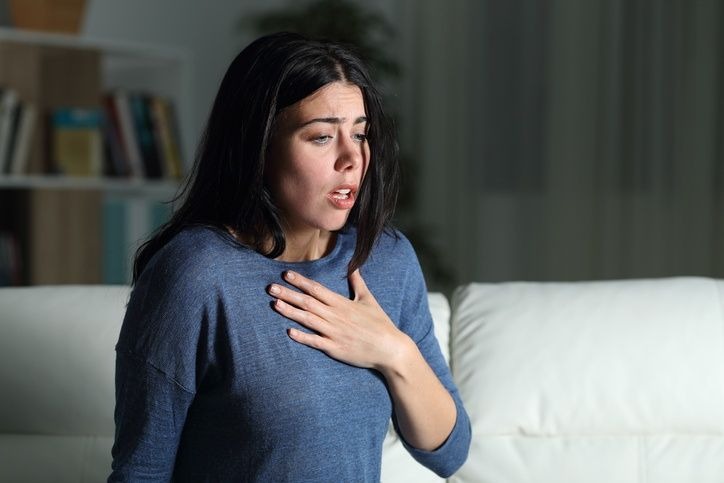Breathing draft: causes, symptoms and solutions?
Caution : You must consult your doctor for your health. This page presents only a personal and alternative point of view which should not be considered as an attempt to prescribe medicine.
Indrawing is the manifestation of an abnormality in the respiratory system.
It takes place during inspiration and reflects an abnormal stretching of the rib cage tissue inward.
It is a breathing difficulty that is difficult to understand from the point of view of its origins and manifestations.

What are the causes of indentation?
There are a multitude of causes that can explain pulling breath syndrome.
Usually, acute infections are the most likely causes.
They are usually seen in children as fever, nasopharyngitis or acute pharyngitis.
These infections always cause blockage of the airways.
In other words, they hinder alveolar and cellular gas exchange.
This makes it difficult to circulate air within the body.
Acute infection or inflammation of the tonsils may also be responsible for respiratory indentation.
It requires great efforts to pass the inspired air.
Although less common, many other conditions are responsible for stretching chest tissue.
Indeed, it can be:
- a congenital malformation at birth,
- an involuntary contraction of the vocal cords,
- impaired circulatory functions,
- airway obstruction from toys or appetizers,
- insufficient oxygen in the inspired air,
- treatment with suffocating agents, etc.
In other words, shortness of breath is caused by respiratory failure mainly linked to many pathologies.
It is therefore recommended that you consult a doctor to determine the exact cause of your discomfort.
How does this respiratory distress manifest itself?
The symptoms of indrawing are very varied but the common point between all patients is a considerable increase in work of breathing.
This means that extra effort is needed to move inspired air through the body.
The respiratory indrawing can be localized in different places such as under the bones or above the xiphoid bone.
It is also observed at the level of the intercostal spaces, the sternal fork or in the upper part of the collarbones.
The muscles of the neck stretch and contract until the hollow between the collarbones is visible.
Finally, most patients make a noise with each breath, which is very similar to wheezing.
In addition, the phenomenon of respiratory indrawing generally arises in children from 6 months to 3 years old.
In this case, we also speak of respiratory failure.
In these situations, the child may have a fever and even have the sensation of choking, which makes the use of a ventolin mandatory.
In adults, insufficient breathing can become very dangerous and lead to a tumor or death from asphyxiation.
How to relieve dyspnea by indrawing breath?
Solutions against respiratory indentation are limited.
You have the choice between natural remedies or seeing a doctor.
The severity of the harm will help you determine the best solution.
Natural gestures
Sometimes we tend to confuse the indrawing breath with true respiratory distress.
If it is a temporary and occasional difficulty in breathing, it is advisable to:
- drink a large glass of water,
- drink a mixture of hot tea, lemon and honey,
- take a hot bath,
- use a humidifier,
- go for a walk in the fresh air.
These solutions are to be considered only if you know it is a temporary discomfort.
Conversely, they will not be able to relieve you properly.
Consult a doctor
This is the most recommended solution for all people suffering from indrawing breath.
The doctor is the only specialist capable of determining, on the basis of a diagnosis, the real causes of this phenomenon.
Each cause has a particular solution.
He can therefore prescribe a suitable treatment to relieve the patient.
If the respiratory indrawing is due to an acute infection for example, treatment with corticosteroids is ideal.
In addition, at an advanced stage, the doctor may consider surgery.
It will put the abdominal viscera back in place and re-weld the communication between the rib cage and the abdomen.
However, there are more serious cases that require you to refer the patient directly to the emergency room.
The Heimlich method is a first aid gesture while waiting for the arrival of a specialist.
In any case, this condition must be treated quickly.
Relearn to breathe well
If you have difficulty breathing, a breathing class can also be helpful.
Indeed, many people simply suffer from reverse breathing, also called paradoxical breathing.
This type of breathing is the reverse of the natural process and therefore creates an abnormal draft.
It will therefore be necessary to hire a breathing coach to relearn the basics of breathing, such as breathing in the belly, breathing calmly without making noise, etc.
In the event of a breathing difficulty of this type, I strongly advise against yoga pranayama exercises such as alternate breathing.
These yogic breathing exercises should only be done when you are already breathing normally.
They should be avoided when you have a serious respiratory problem because it can exacerbate your respiratory imbalance.
Conclusion
In short, the causes of respiratory indrawing are diverse.
These are usually acute infections, but also a lack of caution due to the stress of everyday life.
It manifests as noisy inspiration and difficulty breathing.
The respiratory indrawing is localized in various places of the body.
The optimal solution to remedy this ailment is to seek medical attention in severe cases, although natural approaches are involved in the treatment.
Whatever your discomfort, a breathing class will still do you the greatest good.
❤ The ultimate guide to breathing
Intermittent Breathing : Discover the method to quickly relieve your anxiety and chronic fatigue (positive effects from the first use).Read also :
Previous article : Sophrology and breathing: the complete guide
Next article : Too much carbon dioxide (CO2) in the blood: what natural treatment?

